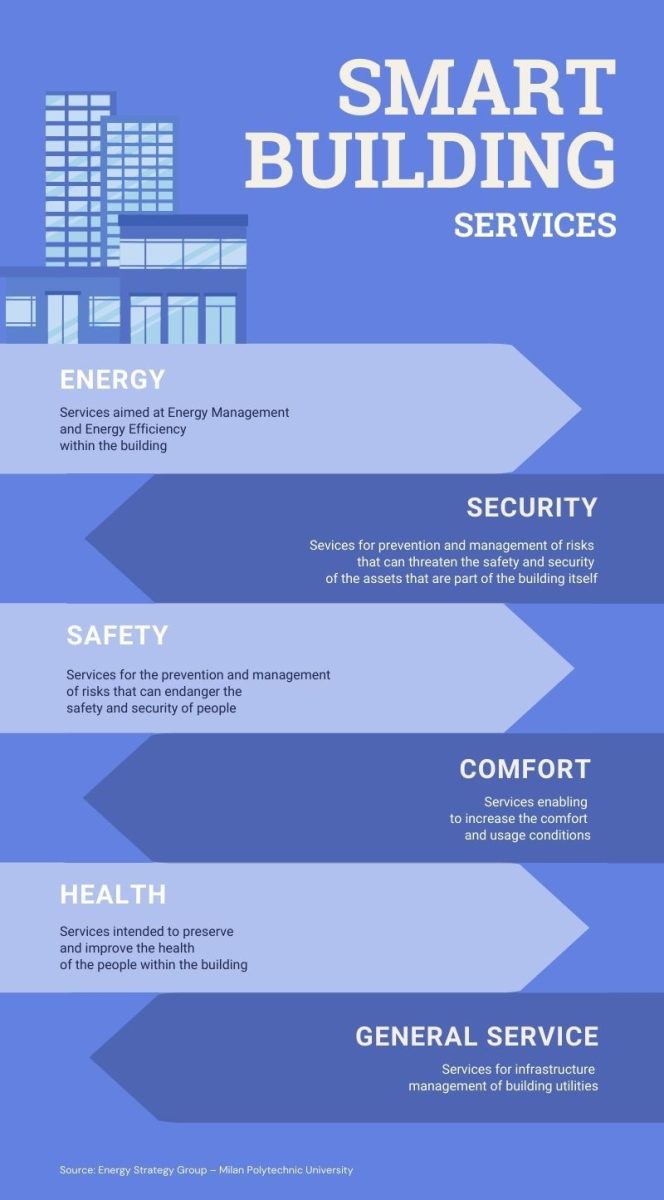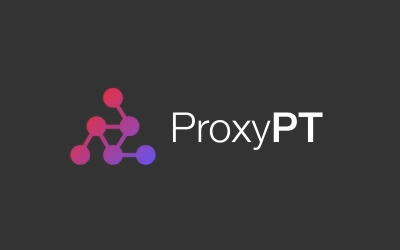The expression “Smart Building” is a product of the Big Data era. The exponential amount of CPU power and faster broadband connections have increased what can be realized in protecting and managing buildings.
It is not clear to everyone yet what “Smart Buildings” really mean nor what advantages they can bring to the people living in them. Smart buildings have big records around health and security for both people and assets and they give fair energy savings, comfort, and better quality living standards. These are aspects that have become fundamental after the pandemic.
So, what do we really mean by “Smart”? It is the capacity to improve energy efficiency and building performance by adopting digital technologies. A Smart Building, either private or public, is an integrated ecosystem that can offer services, optimize consumption and improve the well-being of its residents.
Until a few months ago, there was usually a discrepancy between what people were expecting from a smart building and what could really be offered. This happened because of technological immaturity and a lack of clear objectives around what we wanted to achieve.
The truth is that Smart Technologies are now completely transforming the construction industry. They have now reached good maturity and they are structured by a convergence of different systems that until some time ago had only been used separately. It is possible to optimize some of the building areas to improve productivity and employee satisfaction and, at the same time, allowing to get big savings helping companies to reduce their carbon footprint and pay less in their invoices.
Smart systems can detect, analyze and act according to data flows received by sensors or cameras. Today this is happening even more frequently together with other systems which can interact with them: from HVACs to lightning, from CCTVs to access control.
The hardware security solutions are now integrated with IP technology: it is open-source which allows better collaboration between surveillance (or the access control software) and other intelligent systems within the building.

Buildings equipped with smart technologies are studied to create a healthier and more comfortable experience for people with some specific controls on lighting, temperature, and air quality, allowing them to work in a place that offers optimal conditions to work well.
Offices, conference centers, skyscrapers, and historical buildings can be easily equipped with ad-hoc systems which can facilitate Green Management and other mechanisms of an advanced “liquid office”, through managing spaces using a multifunction approach.
THE REAL BENEFITS
To remain competitive in the current global economy, companies need to invest in systems that can offer long-term solutions to manage and improve their building costs. At the same time, the spaces need to comply from a health and usefulness perspective to improve the productivity of their users.
Understanding how to fine-tune the performance of a building has been, until not too long ago, something somewhat difficult. Now, using IoT devices and sensors we can get real-time operational information that can be easily read, and which can be used to improve gains. The Internet of Things is a suite of technologies that allow data to travel and be assessed and analyzed to be turned into information or intelligence.
Turning a building Smart is not done by only adding some tools and technologies that can facilitate and optimize the use of the building itself but it also means giving real benefits to the people who need to manage the building: Energy Managers or Facility Managers.
Choosing to make a building Smart means automating and integrating spaces with digital technologies that can really simplify the complexity such difficult management might bring and, at the same time, it also offers a rationalization of usage (Building Automation).
The functionalities of the buildings can be seen as strategic resources which can help organizations to realize their objectives.
Investing in Smart Technologies does not mean a constant change in the system. It actually means the opposite: choosing in a careful way a managing platform that uses open technologies and can be integrated with any tool that can be found on the market.
The products available, such as 4Energy, have been created to be integrated and can therefore communicate with most of the BMS (Building Management Systems). It is this feature of adaptability which helps to reach efficiency objectives and system optimization and embrace Green and Circular energetic models – all this through complex analysis on system performances and Energy Audits.
Managing the different working spaces is done through some sensors which observe the presence of people in an anonymous way. 4Energy gathers data in order to analyze them and it allows to install digital devices such as totems that can be placed anywhere which monitor the availability of space within the building in real-time. The Building Manager can then obtain huge savings by interacting with the control systems by switching off the heating or the cooling system where there are no people.
Gathering data on consumption by using sensors to measure the consumption of water, gas and electricity, is fundamental to build dashboards, very detailed graphs and analysis with statistical data which help the Energy Manager to analyze the data and optimize usage by reducing waste.
Such function is particularly interesting especially now that a lot of working spaces have been left underutilized compared to their original purpose.
When we think about starting to use the spaces again, that can be done in the best way possible. The sensors can be installed anywhere, from open spaces to skyscrapers – the scalability is guaranteed by the type of architecture.
INTELLIGENCE AND MANAGEMENT AUTONOMY
Retrofit, which describes when we need to adapt new systems to already existing ones, is something we need to think carefully about. This can happen in schools, commercial buildings, offices, historical buildings and hospitals. Universal adaptability is something absolutely necessary to measure the benefits of a Smart Building.
The aspect of interoperability must also not be neglected – it is the ability of a system to “cooperate” and exchange information and services with other systems in a trustworthy way.
Technologies can be therefore implemented with lower upfront costs and a decrease in installation and Retrofit expenses. Whilst looking at numbers we need to remember that savings become a constant because of the reduction in maintenance needs and because of the energy consumption control.
The 4Energy platform can be the backbone of a Smart Building since it can create a set of ad-hoc rules for the optimal use of utilities. This allows some benefits from both an economic and an environmental perspective by giving an immediate ROI (more efficient management of the energy side with a reduced carbon footprint).
IoT can be used as a multi-application platform that controls and shares data from thermostats, ventilation systems, lighting, security sensor, access controls, etc.
As outlined at the beginning of this article, the overall result is an integrated approach that eliminates silos whilst allowing optimization according to the data shared by Smart Sensors and by their usage.
The access is through an ecosystem of open standards with a wide range of options such as reducing costs, expenses and the complexity of the project – this can be achieved through the centralization of a number of Smart Building apps available today. Everything can be monitored from the same place: a centralized management system that allows dialogue amongst the different systems is the key.
Managers and building owners around the world are gathering data to optimize their operational costs when with a technology upgrade it is possible to integrate new services with some really good functionalities without the need of a complete revision of the already installed network.
CONCLUSION
Integration and Innovation are two fundamental concepts to understand the future of more automatized, connected and multitasking buildings and workspaces which have talking systems.
Together with Efficiency and Sustainability, they introduce a new way to look at the construction business: an approach that can connect two faces of the same coin – Smart and Green. Integrated technologies can really help us to get that Green Deal that will transform Europe in a modern, efficient and competitive economy.
YUO MIGHT ALSO LIKE:
Smart office: when your office is informal and customized
Smart office: communication technologies and real example
Smart Meter: user centered multi-utility platforms and EMS



